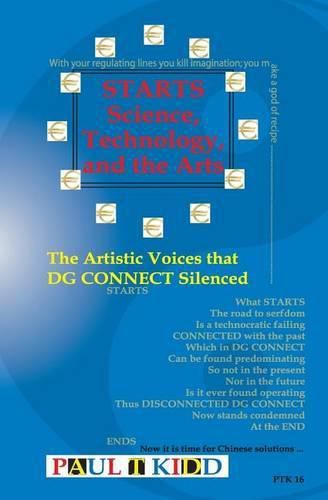Readings Newsletter
Become a Readings Member to make your shopping experience even easier.
Sign in or sign up for free!
You’re not far away from qualifying for FREE standard shipping within Australia
You’ve qualified for FREE standard shipping within Australia
The cart is loading…






Science, Technology, and the Arts is a recounting, in a semi-surrealist manner, of observations made of the actions taken by the technocratic organisation known as the European Commission’s DG CONNECT which led to the worst practice case study that is STARTS. As the above suggests, the style of the book is linked to the world of surrealism, but only partly, as the strange construction not only comes from this, but also from not being constructed according to accepted conventions - restrictions - that readers might expect (demand). This one might say is the point, actually one of several, which readers are left to find for themselves. The book, which is more than a book because its themes are also explored in the cover as well as in a number of related art objects located in the physical world (but which can only be viewed through the limitations of the cyber-world), constitutes an early exploration of something that the author refers to as scriptovisualism, which, in the author’s case, means a dual creative process grounded in both plastic and descriptive expression (hence the extensions just mentioned); and the expression found in the book also operates in both the expressive and the cognitive.
$9.00 standard shipping within Australia
FREE standard shipping within Australia for orders over $100.00
Express & International shipping calculated at checkout
Science, Technology, and the Arts is a recounting, in a semi-surrealist manner, of observations made of the actions taken by the technocratic organisation known as the European Commission’s DG CONNECT which led to the worst practice case study that is STARTS. As the above suggests, the style of the book is linked to the world of surrealism, but only partly, as the strange construction not only comes from this, but also from not being constructed according to accepted conventions - restrictions - that readers might expect (demand). This one might say is the point, actually one of several, which readers are left to find for themselves. The book, which is more than a book because its themes are also explored in the cover as well as in a number of related art objects located in the physical world (but which can only be viewed through the limitations of the cyber-world), constitutes an early exploration of something that the author refers to as scriptovisualism, which, in the author’s case, means a dual creative process grounded in both plastic and descriptive expression (hence the extensions just mentioned); and the expression found in the book also operates in both the expressive and the cognitive.